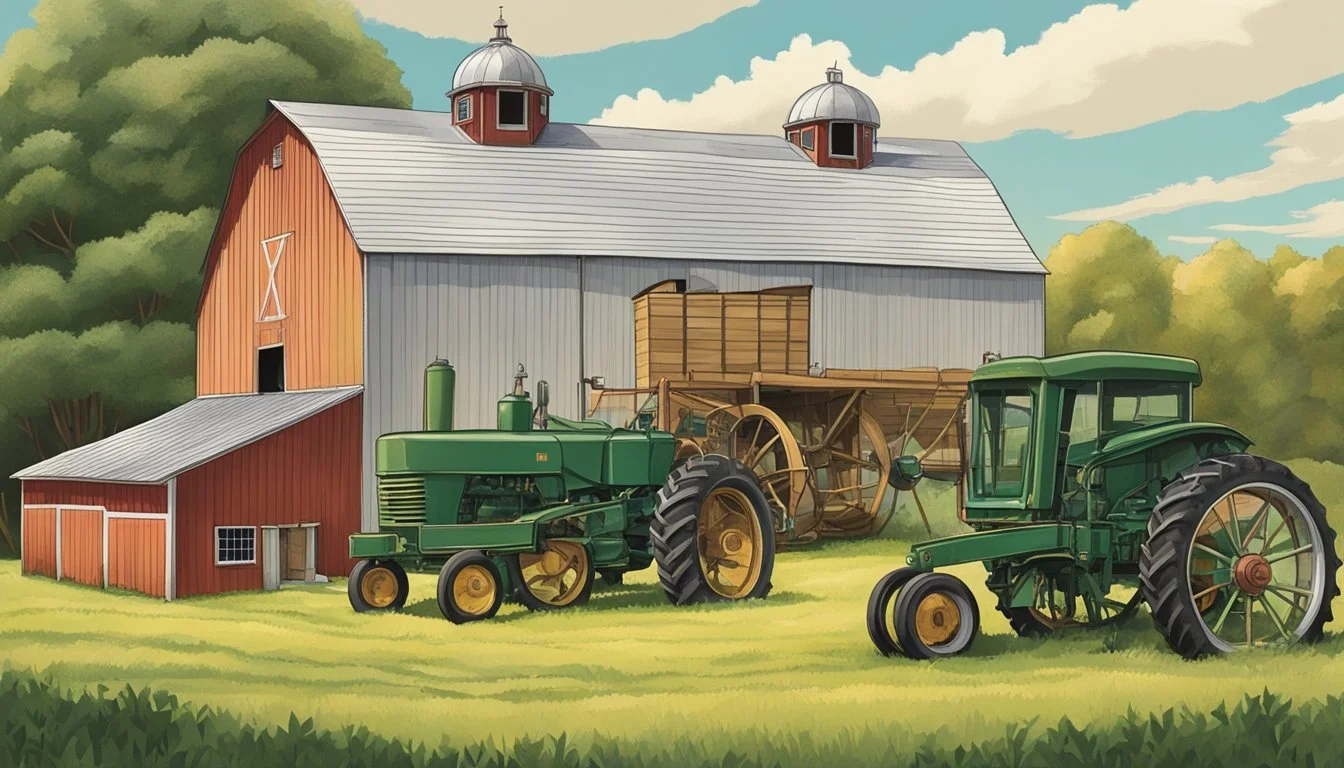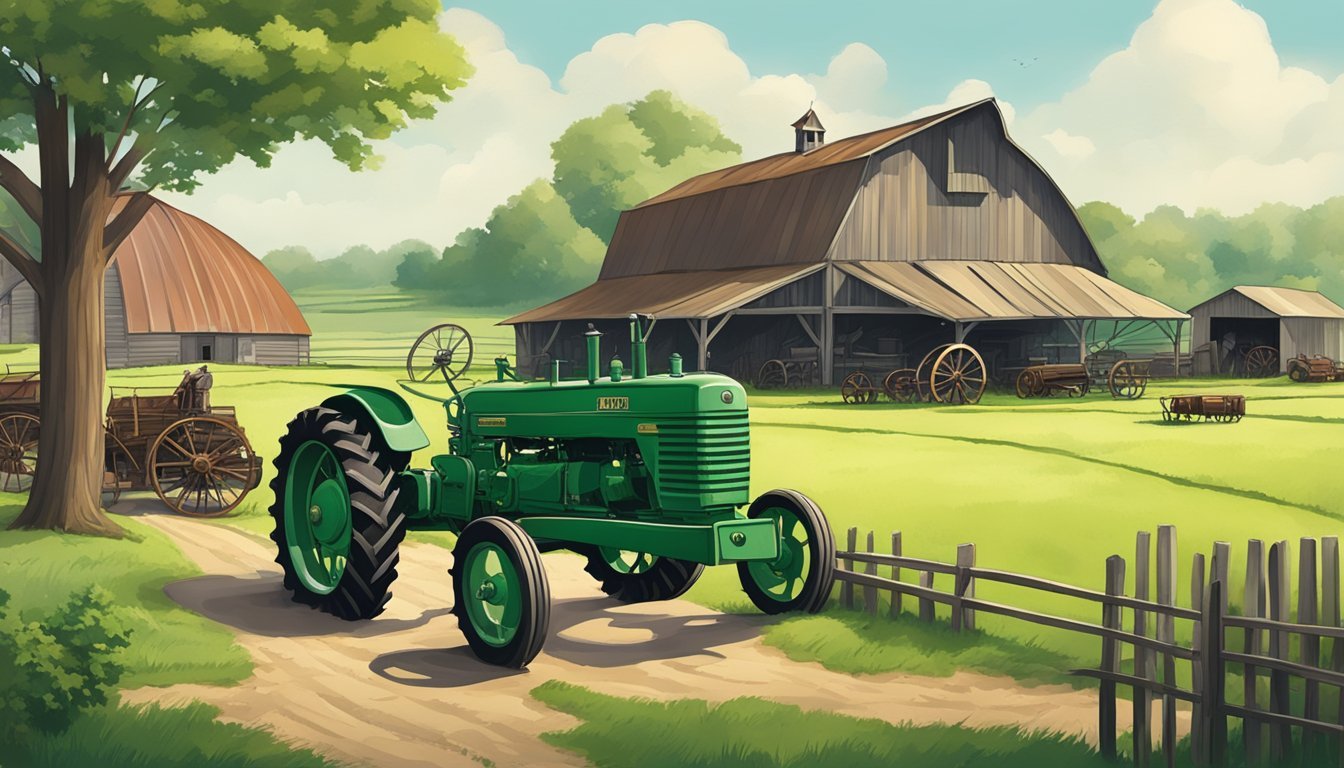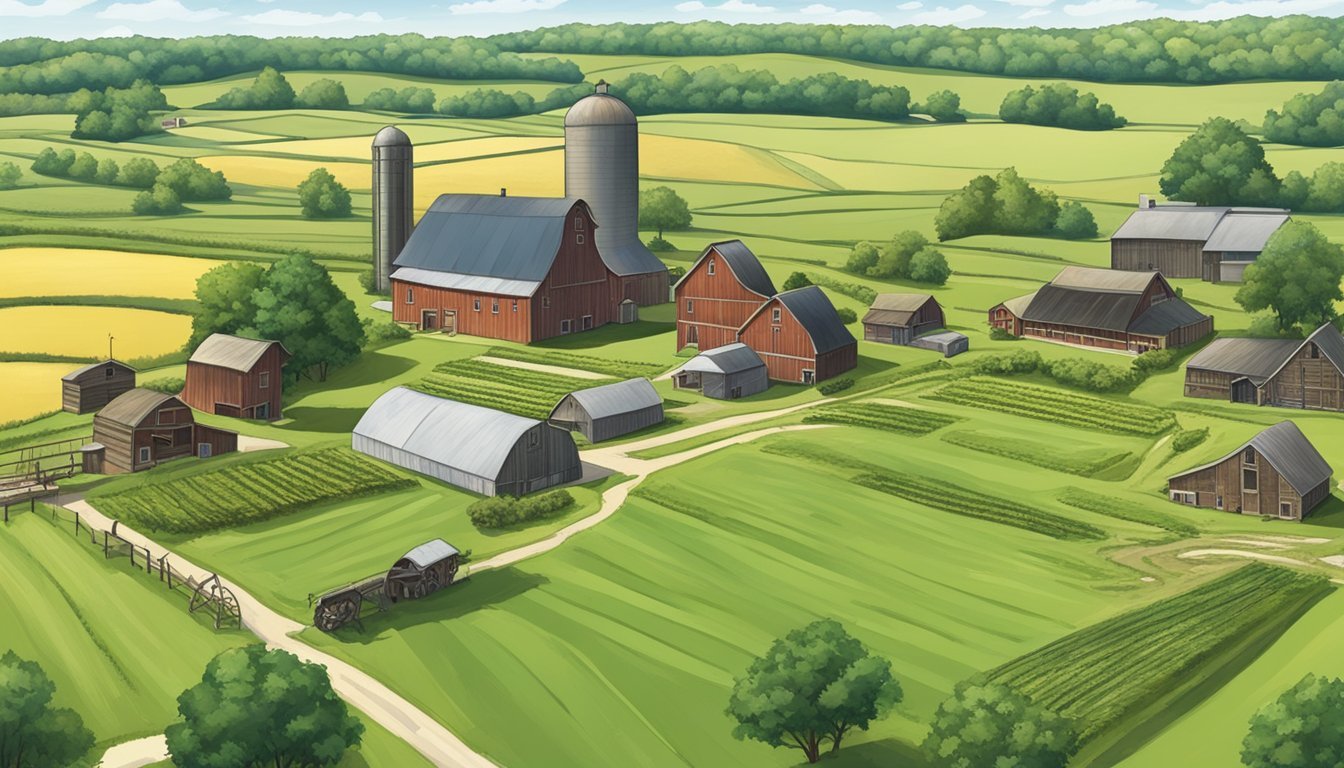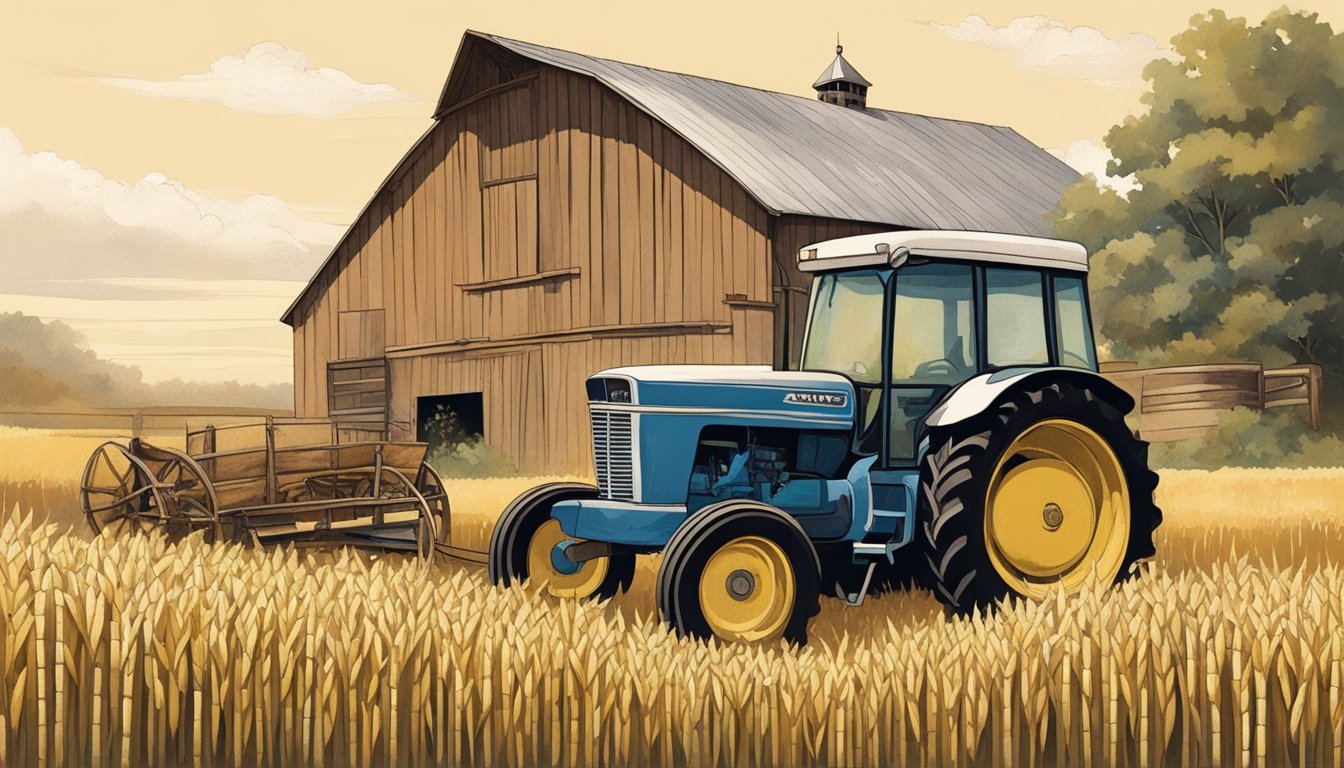Historical Farms and Agricultural Museums in Indiana
Exploring the Heartland's Heritage
Indiana's rich tapestry of farmlands stretches across the state, painting a narrative of its historical significance in the realm of agriculture. Through dedicated preservation efforts, many historical farms have transcended time to offer a unique window into the agricultural past. These farms, together with agricultural museums, are not just static relics but dynamic entities that showcase Indiana's enduring connection to its rural roots. Visitors and residents alike have the opportunity to engage with Indiana's agrarian heritage, a testament to the state's commitment to education and cultural preservation.
The Conner Prairie living history museum exemplifies this dedication, allowing guests to experience firsthand the transformation of Indiana’s agricultural practices. Offering more than a conventional museum experience, Conner Prairie immerses visitors in interactive exhibits that cover the evolution of Hoosier agriculture. Similarly, the Dubois County Museum takes pride in housing Indiana's largest agriculture exhibit, mapping the industry's technological and methodological advances from the 1800s to modern times.
In addition to these immersive experiences, entities such as Indiana Landmarks play a crucial role in protecting rural heritage, extending their preservation efforts from urban structures to the state’s historic barns and farmsteads. By maintaining these agricultural legacies, Indiana continues to connect its agricultural past with the present, ensuring that the lessons and lifestyles of yesteryears remain accessible and educational for future generations.
History of Indiana Agriculture
Indiana's rich agricultural tapestry has been woven over centuries, marking a progression from traditional practices of the 1800s to the advanced farming of today, alongside concerted efforts to preserve the rural and farming heritage that characterize the state.
Growth of Farming in the 1800s
By the 1800s, farming in Indiana had evolved into an entity of its own, transforming vast tracts of land into productive grounds for agriculture. The use of land for farming activities was keenly influenced by the settlers of the time, with German-speaking communities establishing large, multifunctional barns. Indiana's farms flourished during this period, underpinning the state's economy and shaping its identity.
Transition to Modern Farming
As the 20th century approached, Indiana witnessed a shift to modern farming practices. Technological advancements and improved methodologies led to a significant increase in land productivity, tripling corn yields from 35 to 113 bushels per acre between 1895 and 1995. This transformation marked a pivotal moment as Indiana's agricultural landscape steered away from pure manual labor towards mechanized farming.
Preservation of Rural Heritage
Even as farming practices modernized, there arose a strong movement for the preservation of Indiana's rural heritage. Institutions and communities across the state began to collect and exhibit pieces of this history, with places like the Dubois County Museum hosting extensive collections that showcase the evolution of local farming methods from the 1800s to the present day. These efforts ensure that the historical value of Indiana's rural and agricultural past remains accessible to future generations.
Historical Farms in Indiana
Indiana's rich agricultural past is preserved within its historical farms, showcasing a heritage that is intrinsic to the state's identity. These farmsteads are vital links to understanding both regional development and the progress of farming practices through the centuries.
Distinctive Farmsteads
Indiana is home to a variety of distinctive farmsteads, each offering a unique glimpse into the state's agricultural history. The Conner Prairie living history museum serves as a prime example, as it immortalizes 19th-century farm life through interactive exhibits and historical interpretations. This Indiana gem stitches together the fabric of the farming community with educational programs and authentic reconstructions.
Barns: Historic barns pepper the landscape, defining much of Indiana's rural architecture. Many of these structures, constructed with traditional techniques, remain standing to tell the tale of the Hoosier State's agrarian roots.
Conservation of Historic Farms
Preservation efforts are crucial in maintaining the integrity of Indiana's historic farms. Organizations such as Indiana Landmarks focus on the care of historic buildings, including homes, outbuildings, and barns. Their mission has evolved to include rural landscapes, recognizing that these features are as vital to the state's heritage as its urban counterparts.
Historic Sites: Many farms have earned a place among Indiana's most treasured historic sites, like those recognized by the annual John Arnold Award for Rural Preservation. This accolade honors farms that successfully preserve historic farm buildings while continuing to serve agricultural purposes.
Agricultural Museums and Organizations
Indiana is a bastion of agricultural history, housing vital organizations and museums that preserve and celebrate the farming legacy. These entities provide educational resources and serve as custodians of the state's rich agrarian past.
Indiana Agricultural Museums
Indiana hosts a variety of agricultural museums that showcase the state's farming heritage. The Conner Prairie: Indiana's Living History Museum is dedicated to leveraging historical insights to inspire learning for all visitors. It offers a deep dive into the past, while remaining relevant to the present. Another notable exhibit is found at the Dubois County Museum which features the largest agricultural display in Indiana, offering insights into farming methods from the 1800s to today.
Associations and Foundations
Prominent organizations such as the Association for Living History, Farm and Agricultural Museums (ALHFAM) serve professionals and institutions involved in living historical farms and agricultural museums. This association got its start in 1970 and has since been pivotal in advancing the interests of living history organizations. Unique to Indiana, the Indiana Barn Foundation works to preserve and raise awareness of the iconic historic barns throughout the state. Another key entity is Indiana Landmarks, which champions historic places across the state, marking the importance of agricultural sites as part of Indiana's cultural tapestry.
Living History and Education
In Indiana, the integration of heritage and living history into educational experiences allows visitors to engage with the past in a dynamic way. Through hands-on farming activities and recognized educational programs, these historical farms and museums create a platform for immersive learning and the preservation of stories from rural lifInteractive Farming Experiences
They provide visitors with the opportunity to participate in interactive farming experiences. These act as a bridge between historical knowledge and active learning. At places like Conner Prairie, guests can take part in authentic 19th-century farming tasks, such as tending to gardens, feeding animals, and traditional cooking. These experiences are crafted to foster an understanding of agricultural heritage through direct involvement, making history tangible and relatable.
Educational Programs and Awards
They also offer a variety of educational programs which serve to enlighten both the young and old about the importance of agricultural history. These programs often include curriculum-aligned field trips, workshops, and interactive exhibits. Recognitions like the John Arnold Award for Rural Preservation celebrate individuals who have made significant contributions to preserving rural heritage. This emphasis on education not only disseminates knowledge but also instills an appreciation for the historical narratives and experiences that have shaped today's agricultural practices.
Agriculture Today
Contemporary agriculture in Indiana remains a vital part of the state's identity, maintaining a strong presence through various crops and commodities, modern farming practices, and contributing significantly to local tourism.
Crops and Commodities
Indiana's agricultural output is diverse, with corn and soybeans as the flagship commodities. In 2023, farmers across the state harvested these crops extensively, contributing to Indiana's reputation as a leading producer in the United States. Other notable products include tomatoes, which have been cultivated throughout the county's history and maintain a significant role in today's market.
Modern Farming Practices
Modern farming practices in Indiana reflect the evolution and adaptation of technology in the agricultural sector. Farmers utilize precision agriculture techniques to enhance crop yields and reduce waste. This includes the use of GPS-guided machinery, soil sampling, and data analytics to make informed decisions about planting, harvesting, and crop management. These advances indicate Indiana's commitment to innovation in supporting efficient and sustainable agricultural production.
Impact on Local Tourism
Agriculture significantly bolsters Indiana's local tourism. Historic farms and agricultural museums offer insight into the state's agricultural heritage, attracting visitors interested in this aspect of Indiana's past and present. Through agritourism, farms provide educational experiences, as well as recreational activities, that allow tourists to get a first-hand look at modern farming operations. This intersection between agriculture and tourism not only educates the public but also supports local economies and celebrates Indiana's longstanding agricultural tradition.
Advocacy and Future of Farming
The state of Indiana is actively engaged in the preservation of its rural heritage and the promotion of sustainable agricultural practices. These initiatives are not only important for maintaining the historical integrity of its farmlands but are also critical in securing a sustainable future for agriculture within the state.
Indiana's Farmland Preservation
Indiana's commitment to preserving its agricultural heritage is evidenced through the implementation of various rural preservation programs. These programs, including the celebration of the state's bicentennial, are designed to safeguard the rural landscape and maintain the legacy of Hoosier farmers. By earmarking lands as significant historical sites, Indiana ensures that its past is commemorated and that future generations can access and learn from these living historical experiences.
Sustainable Agriculture Initiatives
Indiana's approach to agriculture is ever-evolving, with sustainable agriculture initiatives at the forefront. The integration of renewable resources and environmentally friendly farming methods has been a key focus, aimed at reducing ecological impacts and promoting long-term viability. Educational programs and partnerships with local farmers underscore the importance of sustainable practices in maintaining the health of Indiana's rural ecosystems.
Cultural and Historical Artifacts
Indiana's rich agricultural history is encapsulated in the cultural and historical artifacts found throughout the state. These items provide tangible links to the past, showcasing the evolution of farming and rural life.
Artifacts of Agricultural Heritage
Indiana takes pride in its agricultural heritage, boasting a wealth of artifacts that reflect the life and work of its farming communities. At the heart of this collection are tools and implements that range from hand-held devices to horse-drawn plows. Conner Prairie brings the 1800s to life not just by displaying these items but by offering interactive experiences. Visitors can encounter objects tied to specific periods, like an 1836 blacksmith forge or a recreated 1863 Civil War camp, providing a tactile and visual journey through time.
Restoration and Display Efforts
Restoration and display efforts ensure that Indiana's historical artifacts are preserved and shared with the public. Museums and historic sites employ rigorous techniques to restore these pieces to their former glory. Documenting the lineage and usage of artifacts, historians and experts contribute to a widespread heritage collection that resonates with visitors. The state's commitment to exhibit these artifacts is witnessed in institutions like the Benjamin Harrison Presidential Site, where the life and times of the 23rd president and his era are carefully curated for educational and cultural enrichment.






